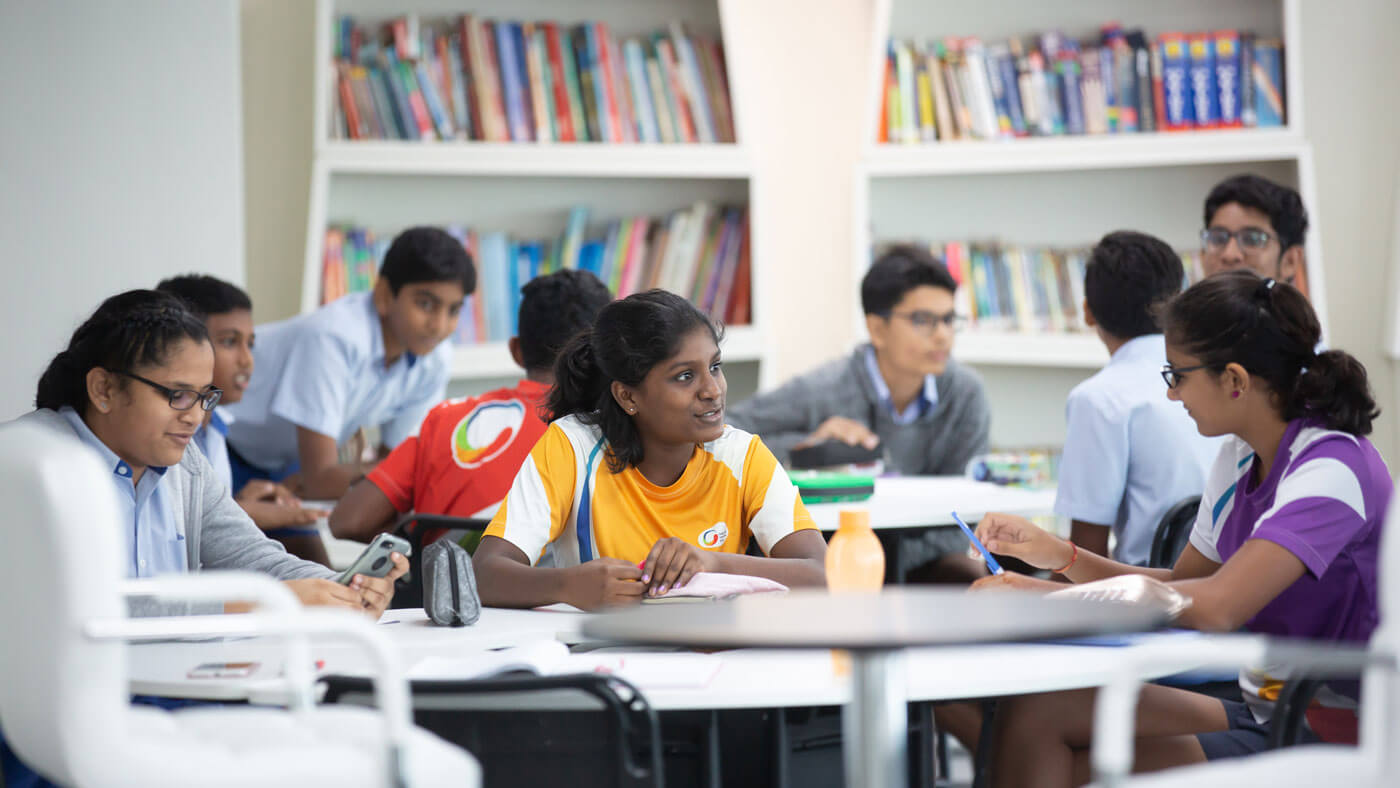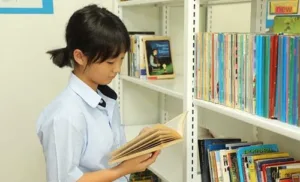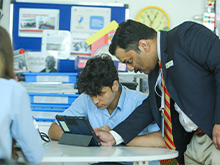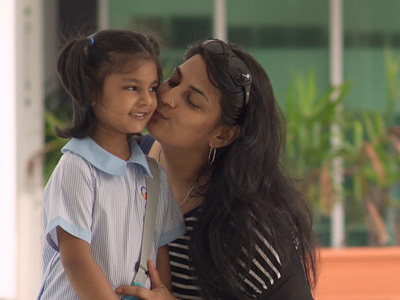Download our FREE Academic Calendar now! 📚 Start your child’s journey to success.
Making learning more interesting for primary school students is not just a goal. Rather it’s important for developing a lifelong love of learning. It is critical to provide an educational atmosphere that is engaging, pleasant, and full of curiosity-driven activities during the early years of student development. We can unlock the amazing potential of young minds by incorporating creativity, interactivity, and a little bit of magic into the learning process.
Imagine a classroom where history comes to life through immersive storytelling, where math transforms into exciting puzzles, and science becomes hands-on experiments that ignite a sense of wonder. This is the vision we aspire to bring to life. By tailoring lessons to capture children’s interests, providing interactive experiences that make concepts relatable, and encouraging questions and exploration, we can turn each day of learning into a thrilling adventure. The following piece will show you how to make learning an enjoyable adventure for young students at IGCSE curriculum schools. We will discuss how every day is an opportunity to pique their interest and curiosity and provide them with the knowledge and skills they need to thrive in the world.
Why Should Learning Be Fun for Children?
Learning should captivate the hearts and minds of children because it serves as the cornerstone for a future brimming with curiosity, advancement, and triumph. When children find pleasure in the process of learning, they actively engage with it rather than passively receive information. This active involvement makes educational experiences more indelible and motivates youngsters to venture forth, ask questions, and independently seek out knowledge. Enjoyable learning encounters spark their creativity and honing of critical thinking skills, fostering their development into well-rounded individuals who are better equipped to confront the uncertainties of tomorrow.
Furthermore, when learning is a source of delight, it cultivates a favorable disposition toward education. Children of primary school are more likely to anticipate their school days with enthusiasm, eager to unearth fresh discoveries, and excited about delving into new subjects. This optimistic mindset extends far beyond the classroom and can shape their entire approach to life’s trials. Enjoyable learning nurtures resilience, instills a growth-oriented mindset, and imparts the wisdom that setbacks serve as opportunities for growth and learning. Ultimately, crafting an enjoyable learning journey for children isn’t just about molding superior students; it’s about fostering a lifelong love of learning, leading them to greet each day with inquisitiveness and an eagerness to expand their knowledge, setting the stage for a promising and fulfilling future.
10 Tips to Make Learning Fun for Primary School Students
Here are 10 tips to make learning interesting and fun for primary school students:
1. Break up your lessons: Children normally have lower attention span. So, it’s a good idea to break up your lessons into smaller, and more manageable segments. Incorporate a variety of teaching methods, including lectures, discussions, interactive activities, and intermittent breaks, to maintain engagement and focus.
2. Give Choices: Providing students with choices in their learning can empower them and make the educational experience more enjoyable. Allow them to select topics or projects that interest them, or offer different ways to approach a lesson to cater to various learning styles.
3. Utilize Games: Games are a fantastic way to make learning fun for kids. You can find educational games specifically designed for different subjects, or even create your own games to reinforce key concepts. Games add an element of competition and fun to the learning process.
4. Encourage Collaboration: Kids often thrive when they work together. Create opportunities for them to collaborate on group projects, play educational games together, or discuss what they’ve learned with their peers. This fosters teamwork and social interaction.
5. Incorporate Movement: Physical activity is essential for children’s development. Incorporate movement into your lessons through active games, outdoor field trips, or simply by allowing students to stretch and move around every so often. This keeps them alert and engaged.
6. Hands-On Activities: Children at international schools learn best when they can actively explore concepts through hands-on activities. These activities provide tangible experiences that help solidify their understanding of complex subjects, making learning more enjoyable and memorable.
7. Embrace Creativity: Use your imagination to make lessons more engaging. Incorporate creative elements like music, dance, or storytelling into your teaching methods. These approaches can captivate students and help them connect with the material on a deeper level.
8. Plan Educational Field Trips: Field trips offer a change of environment and a chance to learn in a real-world context. Select field trips that align with your curriculum and are interesting to your students. Experiencing learning outside the classroom can be exciting and enriching.
9. Leverage Technology: Technology can be a valuable educational tool. Explore educational apps and websites that make learning fun, interactive, and enjoyable. Be sure to integrate technology wisely, ensuring that it enhances the learning experience without becoming a distraction.
10. Embrace the Outdoors: Spending time outdoors has numerous benefits for children. It can boost their focus, creativity, and overall well-being. Whenever possible, take your students outside for lessons, breaks, or even just for playtime. Nature can provide a refreshing and inspiring backdrop for learning at primary schools
By implementing these strategies, you can create a dynamic and enjoyable learning environment for primary school students, fostering their curiosity and enthusiasm for learning.
What is the Impact of Making Learning Interesting for Kids?
Making learning fun and interesting for kids has a profound and positive impact on their education and overall development. Here are five compelling reasons why it matters:
1. Active Participation and Enthusiasm: Encouraging kids to actively engage with and enjoy their learning process is key. When learning becomes an exciting adventure, children naturally become enthusiastic participants in their educational journey. This not only makes the classroom experience more enjoyable but also sets the stage for lifelong curiosity.
2. Deep Understanding and Lasting Memories: Fun and captivating learning experiences tend to leave a profound mark on young minds. When kids find joy in what they’re learning, they tend to retain knowledge more effectively and grasp complex concepts more deeply. This equips them with a solid educational foundation that pays dividends in the long run.
3. Cultivating a Lifelong Passion for Knowledge: By making learning an enjoyable endeavor, we have the opportunity to instill a genuine passion for knowledge in children. When they take delight in the process of acquiring information, they’re more likely to view learning as a lifelong adventure rather than a tedious task. This passion can be a driving force that propels them to explore diverse interests and excel academically.
4. Nurturing Critical Skills: Engaging in lessons often requires creative problem-solving and critical thinking. When children are encouraged to think creatively, it hones essential skills like analytical thinking, inventive problem-solving, and adaptability. These skills are not only instrumental in academic success but also crucial in various real-world scenarios.
5. Building Self-Confidence and Self-Esteem: Success in the classroom, especially when it springs from enjoyable learning experiences, has a transformative impact on children’s self-confidence and self-esteem. Witnessing their own achievements and active involvement in their education bolsters their sense of self-worth. This newfound confidence extends far beyond academic realms, empowering them in various facets of their lives.
Crafting an engaging and enjoyable learning environment for kids transcends mere entertainment; it represents a strategic approach to nurturing their holistic development. By igniting their curiosity, deepening their comprehension, instilling a lifelong love for learning, honing critical thinking skills, and enhancing their self-confidence, we lay the groundwork for their future success and well-rounded growth.
Conclusion
In short, making learning more interesting for primary school kids isn’t just about adding fun; it’s a powerful way to shape their future. When we focus on making lessons engaging and enjoyable, it leads to more active participation, better understanding, and a love for learning that lasts a lifetime. It also helps kids become better at solving problems and boosts their confidence. This approach isn’t just about school; it’s about giving kids the curiosity and skills they need for a bright future. By making learning fun and exciting, we’re helping them on a path to success in school and beyond.
FAQs
How can a teacher make learning more interesting?
A teacher can make learning more interesting by bringing creativity and enthusiasm into their teaching methods. Incorporating real-life examples, interactive activities, and multimedia resources can captivate students’ attention and make complex subjects more relatable. Encouraging questions and discussions, as well as allowing students to explore their interests within the curriculum, can foster curiosity and engagement. Additionally, varying teaching techniques and providing opportunities for hands-on experiences can keep lessons fresh and exciting. Ultimately, a passionate teacher who genuinely cares about their student’s growth and is open to adapting their approach can create a dynamic and enjoyable learning environment.
Why are fun activities important in school?
It is essential that students participate in enjoyable activities at school. Learning becomes more fascinating and engaging when fun activities for students are included. They also keep students motivated. They also help children acquire important skills like cooperation, creativity, and problem-solving. Furthermore, such exercises help learners recall what they have learned by breaking up the monotony of classroom lessons. Children who have fun while they are studying have a more positive attitude towards school. Hence, this leads to improved academic performance. Finally, these activities allow youngsters to discover their own talents and interests, allowing them to develop and learn in their own distinct ways.
How do schools motivate primary school children?
Motivating young children in primary schools requires a skillful blend of inspiration and warmth. Schools employ various techniques to kindle their passion for learning, including fostering a welcoming and inclusive classroom atmosphere, acknowledging and celebrating individual accomplishments, and presenting a wide array of activities that cater to diverse interests and learning methods. Incorporating interactive and hands-on learning experiences, like games and collaborative projects, can infuse lessons with greater enjoyment and memorability. Furthermore, nurturing a natural sense of curiosity and amazement by encouraging inquiry and exploration serves to ignite a child’s inner drive to uncover and comprehend the world around them. Ultimately, the goal is to cultivate a genuine affection for acquiring knowledge that transcends mere grades and examinations, allowing young minds to embrace learning with eagerness and delight.
How can a teacher improve primary school students’ learning?
To enhance the learning experience of primary school students, educators should focus on creating an interactive and inclusive classroom atmosphere tailored to individual learning preferences. This involves nurturing a culture of inquisitiveness and active engagement, where inquiries are welcomed, and errors are viewed as valuable learning opportunities. The use of diverse teaching techniques, such as hands-on activities, visual aids, and real-world illustrations, can make lessons more captivating and relatable. Additionally, offering constructive feedback and acknowledging students’ efforts rather than solely their results can enhance their self-assurance and motivation to excel. The involvement of parents and guardians is also crucial. Their involvement enables a comprehensive approach to a child’s education. Ultimately, a teacher’s unwavering commitment, empathy, and dedication to each student’s growth can foster an environment where students’ learning becomes an exhilarating and enduring voyage.



































